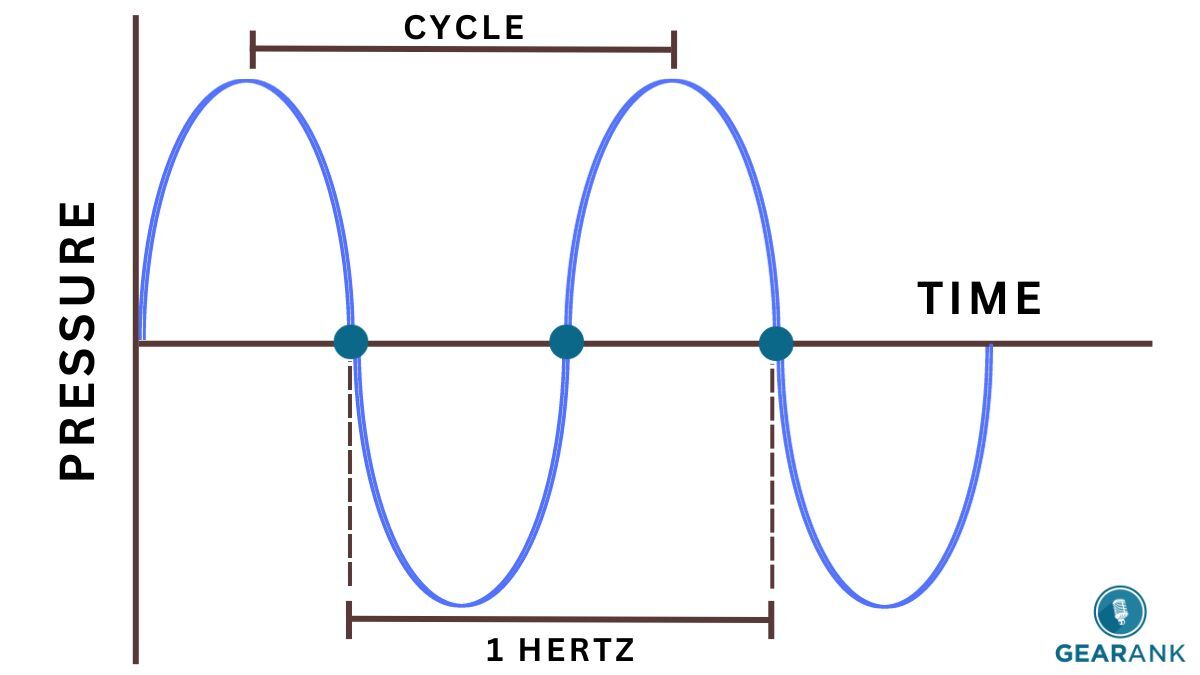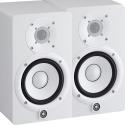What Does HZ Stand for and What Does HZ Mean? Learn Here

Very early on in my musical journey, I realized that music production has plenty of confusing terms I had never heard of, such as Hz. But what does Hz stand for?
These two letters are an abbreviation for Hertz, which refers to the unit that measures the frequency of sound.
Everything we hear is made up of sound waves. These travel at a certain frequency through the air until we hear them, each creating a different pitch depending on certain factors.
I will walk you through Hertz (Hz), its measurement units, and its history in this guide. Moreover, I'll touch on how frequencies work in various aspects of music, such as:
-
Tuning system and scales
-
The history behind the concert pitch
-
Timbre
-
Human sound perception and vocals
What Is Hertz (Hz)?

Hertz, abbreviated as Hz, is a unit of measurement for frequency.
Sound comprises invisible pressure waves caused by vibration from an instrument, your voice, or another sound device.
A sound (sine wave) comprises positive and negative alternations in pressure. It's similar to how an alternating current works.
One cycle means a sound wave has to reach its positive peak, returns to zero, and goes to its negative maximum.
Frequency indicates the number of cycles per second and is expressed in Hertz unit.
Faster vibration from the sound source means more radio waves per second. This creates a higher frequency. We hear it as a high-pitched sound.
On the other hand, low vibration causes fewer waves and lower-pitched sound.
Measurement Units Of Hertz (Hz)
-
Hertz (Hz) is 1 Hertz per second is the smallest measure of frequency.
-
Kilohertz (kHz) is 1,000 Hertz per second.
-
Megahertz (mHz) is 1,000,000 Hertz per second.
-
Gigahertz (gHz) is 1,000,000,000 Hertz per second.
Megahertz (MHz) and gigahertz (GHz) are often only used in the technology industry to describe the processing speed of computers.
In music production, a higher gigahertz processor is preferable to a lower one to accommodate resource-intensive music software.
On a side note, Hertz is widely used in tech and gaming. It is used to express AC motor frequency and CPU clock speed.
It is also the international unit used to measure monitor refresh rate, directly affecting the display quality when playing games.
History Of Hertz
The unit of frequency "Hertz" was named in honor of German physicist Heinrich Hertz in the middle of the 19th Century.
He made various essential scientific discoveries related to electromagnetism, the study of electric currents and electromagnetic waves.
In 1935, the International Electrotechnical Commission (IEC) established Hertz (Hz) as a unit of frequency. Just 25 years later, it was adopted by the international community.
Before Hertz, the scientific community still referred to this as "cycles per second," but this was officially replaced with Hz in 1970.
How Does Hertz (Hz) Work In Music?
The Tuning System and Scales
The number of cycles per second determines how high or low the pitch is. Music is expressed through the use of scales that contain a collection of pitches. So, what determines if a collection of musical notes sounds good together?
The early foundations of the tuning system were first laid out by the mathematician Pythagoras.
He theorized that frequency intervals (or notes) that sound harmonious have underlying mathematical ratios. These whole number ratios reveal what notes go well together.
Thus revealing the marvel we now call the modern musical scale.
It wasn't perfect, though. Pythagorean tuning's weakness is changing from one key to another. This was further refined through the advent of equal temperament. It's a tuning system that allows a musician to switch from different keys.
You can see the corresponding frequency for each musical note in a note frequency chart.
Timbre
Any instrument contains other subtle sounds besides its fundamental frequency or note. This is known as timbre. It is due to its harmonics and overtones--the little inflections of frequencies that give a sound its unique character.
Knowing how frequency works this way is helpful when you want to recreate a sound through a synthesizer. LFOs or Low Frequency Oscillators are often used to shape sounds when using a Synthesizer.
Hz In Musical Instruments
Back then, even tuning systems didn't have a standard frequency to calibrate their instruments. Tuning systems varied considerably in different parts of Europe. France used A=435Hz, while Italy used 432Hz.
It was only in the 1830s that Johann Scheibler, a textile industrialist and the inventor of the tuning fork tonometer, proposed the standardization of the A=440 concert pitch in Germany.
In the early 1900s, different musical associations and communities fervently endorsed the standardization of the concert A=440Hz.
Finally, in 1936, the American Standards Association recommended 440hz as the tuning standard for A above middle C.
Now, adequately intonated instruments today can play together on the same key without sounding out of tune.
Hz in Human Sound Perception and Vocals
The low and upper limit of human hearing is 20Hz-20kHz range.
Children can hear sounds slightly above or below this range. The range slowly lowers and settles until hearing degradation starts from either age or constant exposure to loud sounds.
Regarding perceived loudness, our ears are most sensitive to sounds around 2-5kHz. There are several reasons for this:
-
Evolutionary adaptations. Sounds like running water and animal cries fall within this range.
-
Vocal presence resonates within this range. Speech, singing, and distress calls are keys to human survival.
-
Physiological design. Over time, our eardrums became tailored to be more attuned to this frequency range.
Vocal range will vary from person to person, but on average:
-
Male: 85 Hz and 155 Hz.
-
Female: 250 Hz to 300 Hz or higher.
These vocal ranges are in terms of fundamental frequency, not vocal presence.
What Is Frequency Response?
I regularly work with speakers, headphones, and microphones, and they all have one thing in common: they have a frequency response range, which covers low frequency to high frequency.
The frequency response of your music gear is the range of frequencies it can reproduce or capture.
Not all headphones, speakers, and microphones are created to have the same response, though. Different microphones have different frequency responses. The same track played in other headphones and speakers will vary with their bass, mids, or higher frequencies.
Since frequency responses vary from gear to gear, it's best to check their specifications and determine if it's the right choice for your productions.
What Does HZ Stand For - Final Thoughts
Hz is a popular SI unit that describes the frequency of a sound wave per second. It is a basic sound unit in the music and technology industry.
Sound engineers need to understand Hz and kHz primarily, as this encompasses the range of human hearing. Any more would be in the realm of computing.
Aside from how sound waves work, determining which frequencies work well with each other is helpful for calibrating instruments and pro audio equipment.
Contributors:
Allen Articulo - Co-writer












